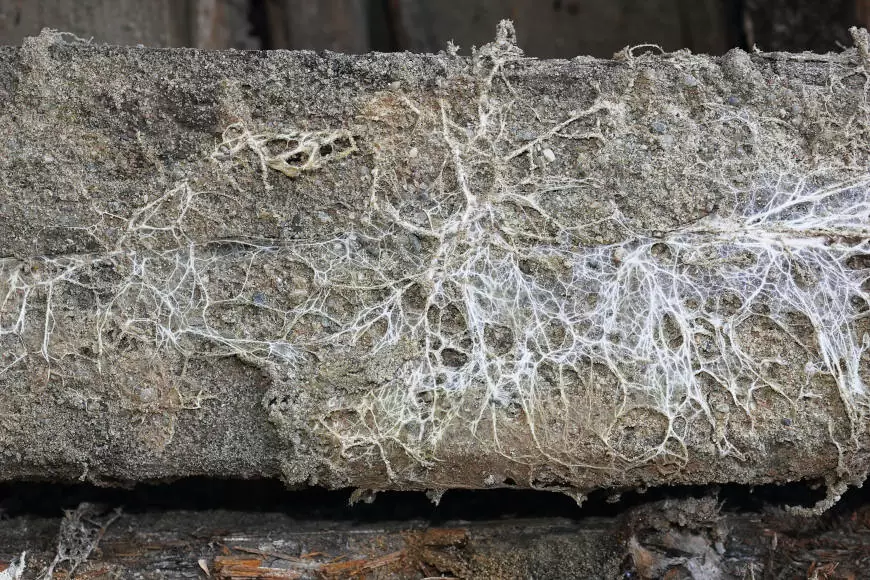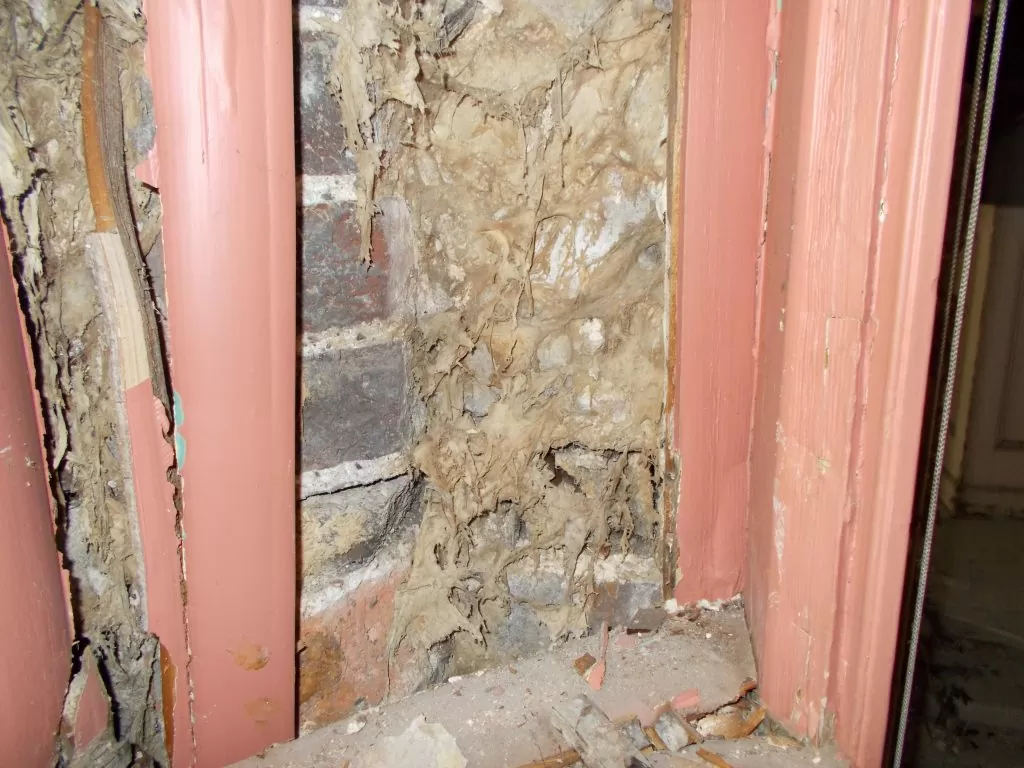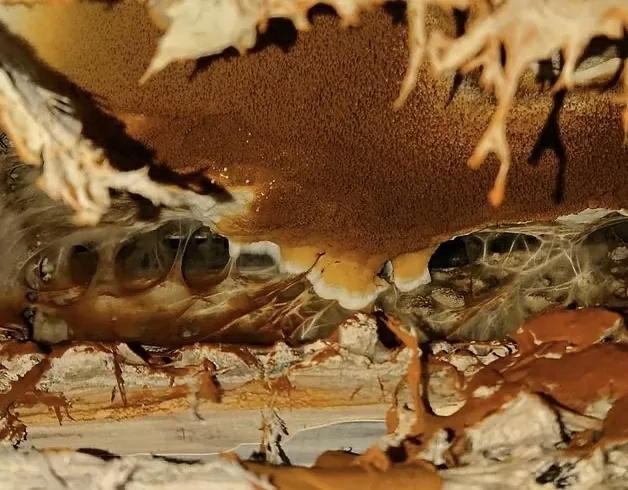Is your building affected by dry rot?

Timber is used as a structural material in the construction of various buildings old and new, it is a natural resource that offers strong, long-term integrity and functionality. However, wood is also a vulnerable material that needs to be protected. Two of the main threats to structural timber are wet rot and dry rot. In this blog post, we will take a look at how to spot signs of dry rot and what to do next.
What is dry rot?
Dry rot (Serpula lacrymans) is a geophilic (soil-loving) fungus that lives for many years or even decades in the damp masonry of buildings and consumes softwood timber built in contact with the masonry or in adjacent unventilated building voids.
Dry rot has the potential to severely damage the structural integrity of the infected building. It is generally caused by chronic problems of defective roof drainage and is therefore generally found in damp and infected masonry extending in a ‘cone shape’ down the building from the roof to below ground level.
If you think your building may suffer from dry rot or any timber decay, we highly recommend you seek professional help. As experts in older and historic buildings, Hutton + Rostron will carry out a thorough timber survey to identify the presence of fungal decay and can investigate residual timber strength, and deliver valuable advice and effective and environmental treatment options.
How does dry rot occur and spread?
Dry rot is generally present in the masonry of buildings and will activate in damp conditions when the moisture content is above 20%. Although it may become inactive and die locally on drying, it will normally re-activate and spread when subsequent further water penetration occurs into the previously infected masonry.
It will commonly persist below the level of any provision for damp-proofing in the base of the walls, foundations or floor structures. It is not practical, or even possible, to completely eliminate dry rot infection from masonry. It is therefore necessary to minimise the risk of water penetration and to separate any decayed or partially decayed, or at-risk timbers from damp or potentially damp masonry.
How to identify dry rot in a building
Dry rot can be notoriously difficult to spot, especially in the early stages and particularly without specialist knowledge or professional guidance. However, there are certain tell-tale signs you can look out for, and these include:
- A damp, musty or mushroomy smell
- Dry, brittle, crumbly sections of timber
- Wood splitting and cracking into small cubes
- Darker, or shrinking timber areas
- Bouncy or creaky timber floors that may be dropping away from skirting boards
- Presence of fluffy white cotton wool like mycelium across the wood
- White or grey ‘skin’ with yellow or lilac patches
- The characteristic soft and fleshy fruiting body, often orange with a rust-coloured centre
- Presence of red dust from spreading spores around fruiting bodies
Below are some typical images to help you recognise dry rot infestations in buildings. These were taken from our Case Studies page where you can find many examples of the work undertaken by our specialist team to deal with dry rot.




How can Hutton + Rostron help?
H+R are an independent team of building professionals who are wood rot specialists and surveying consultants with extensive experience in carrying out timber surveys and dry rot surveys on buildings of all types and ages. We can provide highly effective, environmentally friendly solutions to control and deal with dry rot outbreaks in your building.
We use a range of non-destructive and minimally invasive survey techniques to get to the bottom of the problem including various electronic precision instruments, monitoring equipment, and of course our specially trained Rothounds® whose advanced sense of smell can detect active and inactive dry rot.
Our team will make recommendations that centre around easy-to-implement environmental control and monitoring measures in an effort to eliminate dry rot and timber decay for good. At H+R, we strive to deliver a professional service that allows you to maintain long-term protection from dry rot and other types of timber decay. For more information and to speak to a member of our knowledgeable team, please get in touch.
